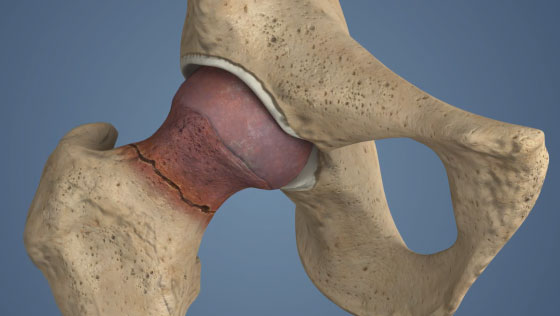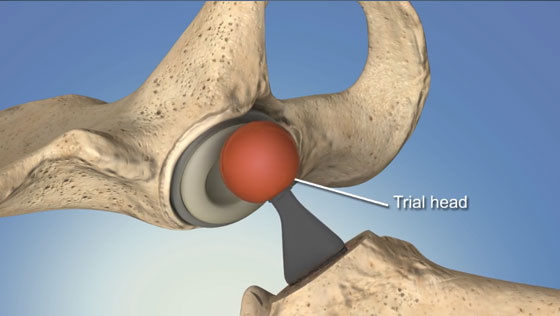What is Periacetabular Osteotomy (PAO)?
Periacetabular osteotomy (or PAO) is a surgical procedure primarily performed to address hip dysplasia. During PAO, the hip socket (or acetabulum) is cut from the pelvis and repositioned to better fit the head of the thigh bone (or femur).
Key statistics about Periacetabular Osteotomy
- Predictors of hip dysplasia at birth include a family history of hip dysplasia, being born in the breech position, and being female. Later, swaddling as an infant may also predispose to this condition[1]
- Hip dysplasia can affect either hip, but 64% of patients suffer the condition in their left hip[1]
- 93% of patients who undergo PAO are satisfied with the results of the procedure[2]
Hip Anatomy
The hip is a ball-and-socket joint formed by two bones: the femur and the pelvis. The head of the femur rests in the socket of the pelvis, also called the acetabulum.
Articular cartilage covers the ends of the bones, reducing friction as the hip moves. The labrum is a thick piece of cartilage that helps keep the ball of the hip joint in the acetabulum of the pelvis.

Why is Periacetabular Osteotomy performed?
Periacetabular osteotomy is performed primarily to relieve the pain and joint dysfunction associated with hip dysplasia (also known as acetabular dysplasia), a condition in which the acetabulum doesn’t properly fit the head of the femur.
Left untreated, this misalignment of the joint can lead to arthritis. Arthritis occurs as the cartilage of the hip wears down, causing the bones to grind against each other. This results in pain and inflammation, and can lead to bone deformity and a loss of joint mobility.
Hip dysplasia can also lead to tears of the labrum, which also can reduce the range of motion in the joint and cause pain.
Who needs Periacetabular Osteotomy?
Most individuals with hip dysplasia are born with the condition, and while some may be treated as infants or children, the majority do not experience significant symptoms until adulthood. Predictors of hip dysplasia at birth include a family history of hip dysplasia, being born in the breech position, and being female. Later, swaddling as an infant may also predispose to this condition[1].
PAO is one surgical technique that may be performed to address the symptoms of hip dysplasia that cannot be treated with nonsurgical measures. Younger patients who do not yet suffer from advanced cartilage damage are the most suitable candidates for PAO. Total hip replacement may be recommended for older patients with advanced arthritis.
How is Periacetabular Osteotomy performed?
- The surgeon will make an incision and carefully cut hip muscle in order to access the hip joint.
- The bone of the pelvis surrounding the acetabulum is cut in order to completely mobilize the hip socket.
- The acetabulum is repositioned to better fit the femoral head and is reattached to the pelvis using screws.
- Bone graft material may be added to the area to encourage bone growth.
- Detached muscles are reattached and the incision is closed with sutures or surgical staples.

What are the risks of Periacetabular Osteotomy?
Potential risks of periacetabular osteotomy include:
- Infection
- Blood clots
- Nerve or blood vessel damage
- Fracture
- Non-union of bone
How long does it take to recover from Periacetabular Osteotomy?
-
24 hours after surgery
A physical therapy routine will be established by the surgeon and physical therapist, and pain medication and blood thinners may be prescribed. -
2-3 days after surgery
Most patients are discharged from the hospital and will be able to walk with the assistance of crutches. -
2 weeks after surgery
Any non-dissolvable sutures and staples are removed and bruising and swelling begin to subside. -
12 weeks after surgery
Most patients are able to walk unassisted. -
3-6 months after surgery
Most patients are able to resume most daily activity. -
6-12 months after surgery
Most patients are fully recovered from PAO, but it may take as long as 24 months for certain individuals to fully recover from the procedure.
What are the results of Periacetabular Osteotomy?
PAO is an effective procedure performed to alleviate the pain and restore joint function to patients suffering from acetabular dysplasia. 93% of patients who undergo PAO are satisfied with the results of the procedure[2].
Find an Orthopedic Doctor in Your Area




